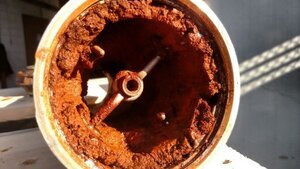
MLK Engineering Solutions has been tasked with designing a leachate treatment system for implementation at the Tillamook Closed Landfill (TCL) of the Tillamook County Public Works Department. The TCL has seen an accumulation of dilute, low-strength leachate due to spring water and stormwater intrusions. Current collection services observe 10-15 million gallons of diluted leachate annually, with flow rates ranging seasonally from 6-100 gpm. Due to high concentrations of iron (~6 mg/L) and ammonia (~7 mg/L), the county has requested a long-term treatment solution. In addition to providing adequate leachate treatment, the design must be hydraulically capable of discharge into a one-acre vegetated swale located below the landfill. Approximately 0.8 acres are available for full-scale construction with an additional 0.1 acres for a pilot study. Meeting permit effluent limits and maintaining system passivity are key design priorities.
Process alternatives for leachate treatment were evaluated using a quantitative rating scale with criteria weighted by relative importance. Primary criteria of permit and area requirements were given weights of ~15%. Elements relating to process passivity, including maintenance, chemical usage, energy consumption, and operational requirements, were deemed to be secondary criteria and given weights of ~10%. Desirable but not essential considerations were categorized as tertiary criteria with weights ranging from 1-5%. Surveyed alternatives for iron removal included vertical flow reactors, electrocoagulation, subsurface flow constructed wetlands, and cascade aeration and polymer flocculation. Ammonia removal process alternatives included horizontal subsurface flow (HSSF) constructed wetlands, sequencing batch reactors, rotating biological contactors, and trickling filters. Ranking results guided the selection of cascade aeration, flocculation, and filtration for iron removal, followed by subsequent ammonia treatment by nitrifying trickling filters (NTFs), and horizontal subsurface flow (HSSF) constructed wetlands for polishing. These processes were integrated into the design based on superior ratings for passivity, treatment efficiency, and space requirements.
The treatment system design pumps leachate from an existing collection well 60’ uphill to the intake structure, an oxic limestone drain (OLD) to promote alkalinity for iron precipitation. A cascade aeration system increases dissolved oxygen (DO) availability for iron oxidation, followed by a settling basin for precipitate removal. To achieve a 95% iron removal efficiency, the aeration system supplies the leachate with 30 grams of DO per hour. Gas transfer is maximized by an 0.8 meters cascade over a 0.5-m-wide rectangular weir into a 500 m2 (0.12 acre) settling lagoon with a depth of 1 m. The next treatment component, two 1-m-deep trickling filters in parallel, have a combined 84 m2 (0.02 acres) area and 84 m3 packing volume. These trickling filters utilize aerobic conditions to microbial nitrification, degradation of organics, and DO supplementation. They are sized to achieve ~86% nitrification, reducing effluent ammonia to 1.86 mg/L. Two parallel 30-m-long by 20-m-wide HSSF wetlands (0.37 acres total) supply a final polishing step for additional ammonia removal by nitrification and iron removal by plant uptake. The leachate treatment design meets space constraints and is expected to meet iron & ammonia discharge limits for variable flow rates.
A system energy balance was developed to determine whether elevation head alone provides sufficient energy to overcome major and minor losses for discharge objectives. Sufficient flow velocity to prevent constituent build-up is maintained by 2” schedule 80 PVC piping, based on a median flowrate of 30 gpm. Final design considerations include process layout, hydraulic specifications, cost analysis, and sustainability factors. The implementation of a pilot study is under investigation.
| Attachment | Size |
|---|---|
| 1.6 MB | |
| 285.81 KB |

